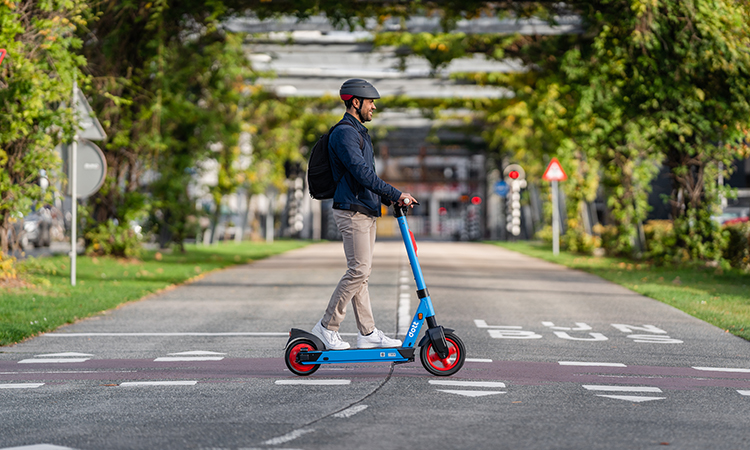
Dott e-scooter trial supports new road safety improvements research
As part of a research trial into improving road safety for micro-mobility users, Dott’s e-scooters were fitted with sensors to monitor rider behaviour.
Dott, the European micro-mobility company, has announced that it has successfully completed a trial with cycling technology firm See.Sense to show how its e-scooters can be used to improve road safety for all micro-mobility users.
A number of Dott’s fleet were fitted with sensors from See.Sense which monitored rider behaviour on the vehicles for a period of 10 weeks. The data collected covered 1,800 rides and a total distance of more than 3,300km, with over 18 million sensor readings recorded in total. Throughout each journey, See.Sense’s monitors detect changes in rider behaviour and help to better understand the user’s experience on the road.
The findings reveal areas which experience particularly high levels of braking or swerving and changes in the road surface. These hot spots will be shared with the relevant authorities to suggest improvements in road quality, helping to make the streets safer for all micro-mobility users. Braking and swerving, for example, can happen around uneven and rough road surfaces or potholes, causing a rider to react suddenly.
Data was also collected to compare surface types, and See.Sense’s data could identify consistent patterns on road, cycle path and footpaths. Understanding when riders are using footpaths could be another indicator of a poor quality road surface. Or it could be down to rider behaviour, allowing Dott to prompt e-learning modules, revise speed limits when the change in surface is detected or further investigate unsafe riding.
Dott, the European micro-mobility company, has announced that it has successfully completed a trial with cycling technology firm See.Sense to show how its e-scooters can be used to improve road safety for all micro-mobility users.
A number of Dott’s fleet were fitted with sensors from See.Sense which monitored rider behaviour on the vehicles for a period of 10 weeks. The data collected covered 1,800 rides and a total distance of more than 3,300km, with over 18 million sensor readings recorded in total. Throughout each journey, See.Sense’s monitors detect changes in rider behaviour and help to better understand the user’s experience on the road.
The findings reveal areas which experience particularly high levels of braking or swerving and changes in the road surface. These hot spots will be shared with the relevant authorities to suggest improvements in road quality, helping to make the streets safer for all micro-mobility users. Braking and swerving, for example, can happen around uneven and rough road surfaces or potholes, causing a rider to react suddenly.
Data was also collected to compare surface types, and See.Sense’s data could identify consistent patterns on road, cycle path and footpaths. Understanding when riders are using footpaths could be another indicator of a poor quality road surface. Or it could be down to rider behaviour, allowing Dott to prompt e-learning modules, revise speed limits when the change in surface is detected or further investigate unsafe riding.
www.intelligenttransport.com


